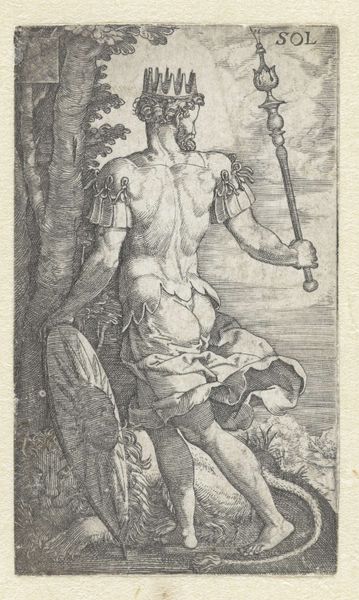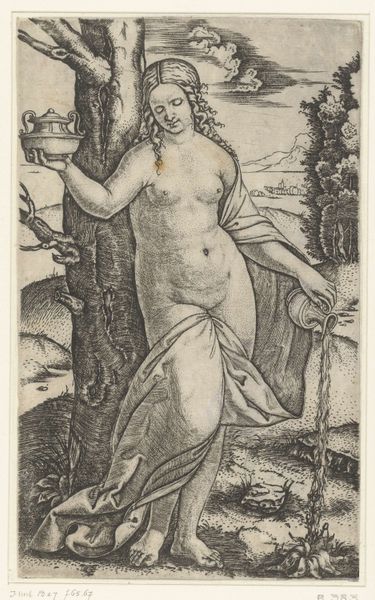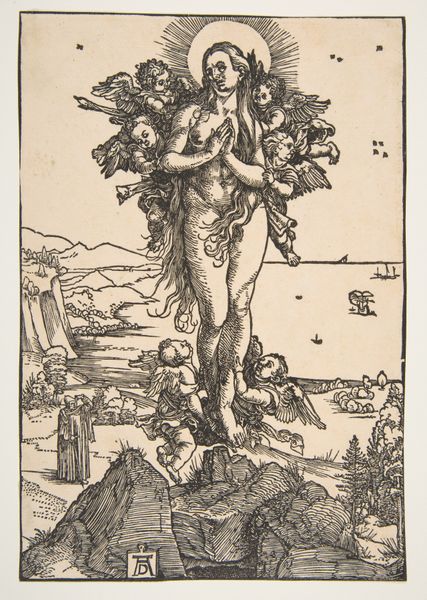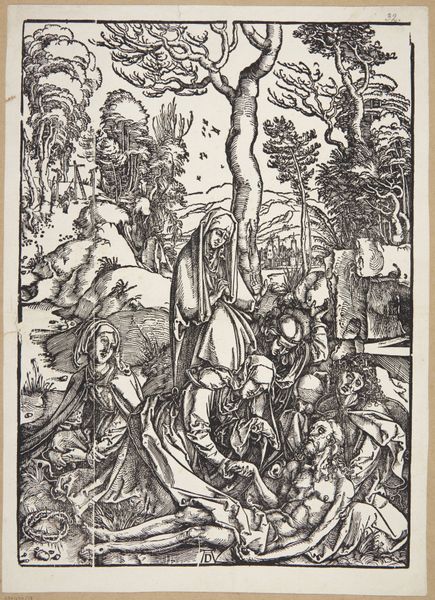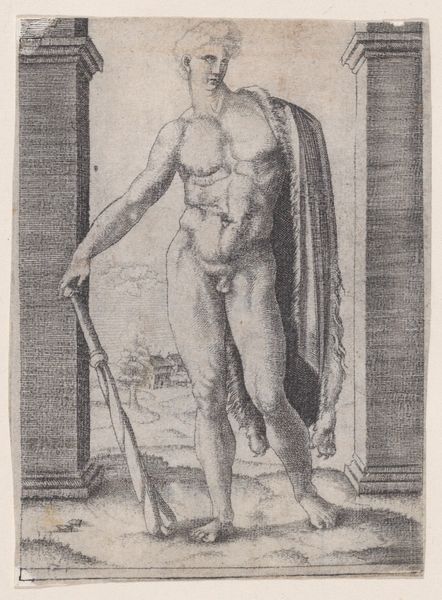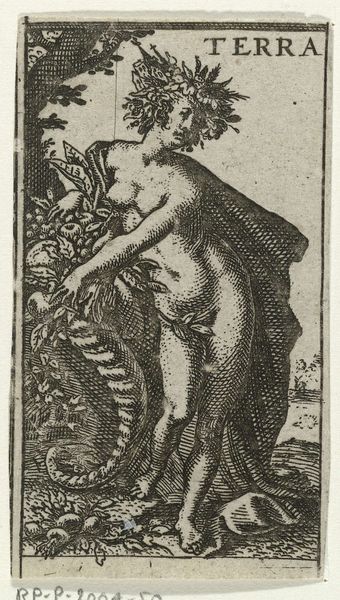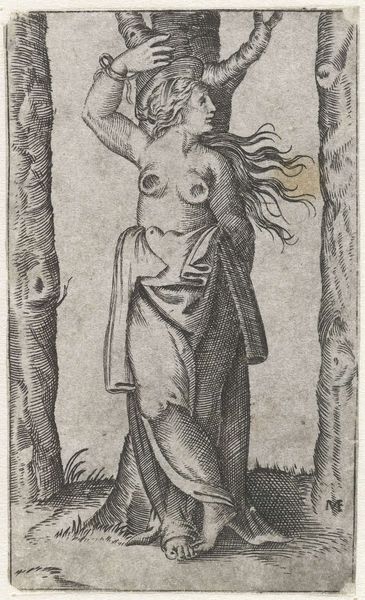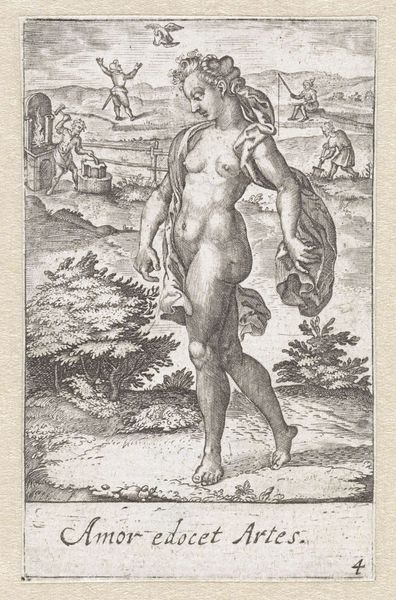
drawing, ink, pen, engraving
#
portrait
#
drawing
#
pen drawing
#
pen illustration
#
pen sketch
#
figuration
#
ink line art
#
11_renaissance
#
ink
#
pen-ink sketch
#
pen work
#
pen
#
history-painting
#
northern-renaissance
#
engraving
Dimensions: height 62 mm, width 42 mm
Copyright: Rijks Museum: Open Domain
Editor: This is Albrecht Durer’s "Heilige Sebastiaan," or "Saint Sebastian," from 1503. It’s an ink drawing on paper, and what strikes me immediately is the stark contrast created by the pen strokes, the very limited value scale here. What’s your interpretation? Curator: The density of the line work is key. Think about the conditions under which Dürer worked. His workshop likely used materials produced elsewhere. So the paper, the ink, and even the specific stylus all carry their own history of extraction and manufacture. And look closely – does the precision and density of the line also point towards Dürer trying to emulate the effects of engraving, which was in higher demand? Editor: I see what you mean. He’s using drawing almost as a form of production itself, mimicking another more 'refined' medium. Does the medium affect how we understand Saint Sebastian? Curator: Absolutely. Instead of focusing solely on Sebastian’s martyrdom or religious symbolism, we can see how Dürer's labor – the sheer time and effort evident in this meticulous drawing – becomes the subject. He is transforming humble, readily available materials into something precious. It challenges notions of artistic skill being solely about invention, shifting focus to craft and intensive, painstaking labor. Where do you see this effort reflected? Editor: The details in the landscape behind Sebastian really highlight that – like the layered textures of the grassy knoll and the buildings. And how densely inked the tree is. It looks so tangible. Curator: Exactly. Dürer's choice of ink, his use of line and shading, makes you aware of the labor invested and elevates those elements to the core meaning of the piece. We're left thinking about artistic process just as much as about religious sacrifice. Editor: I hadn't thought about it that way before. Looking at the drawing as a record of work rather than solely a religious icon really opens up its meaning. Curator: Right? Shifting the lens to material realities and artistic labor reframes the artwork and how we engage with its historical value.
Comments
No comments
Be the first to comment and join the conversation on the ultimate creative platform.


